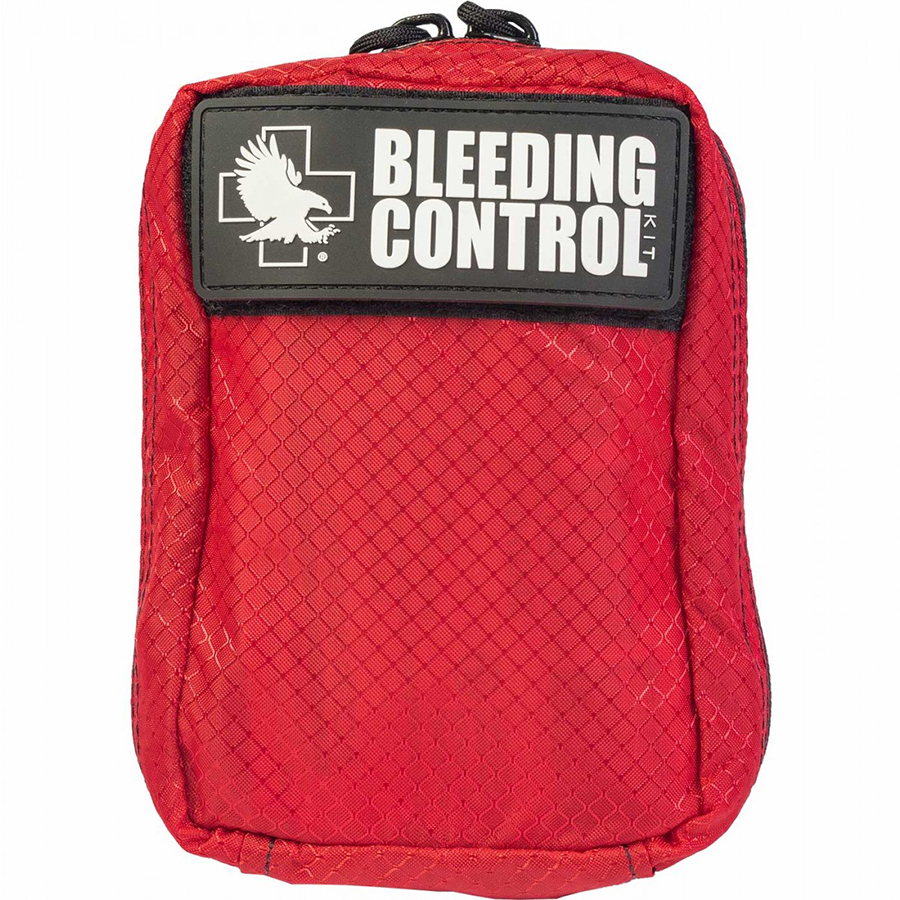
Active Shooter Victim First Aid Trauma Care
Tuesday April 20, 2021
Recent active shooter events have highlighted the need for law enforcement and others to work together to save lives. Active-shooter situations are becoming more frequent and workplace violence is on the rise. Since violent scenarios are not a matter of whether, but when, and the protection of people is a concern, businesses and organizations should have a clear plan in place for dealing with such crises, not the least of which is immediate first aid care with stop the bleed capabilities for the shooter's victims.
The majority of active shooter preparedness focuses on what to do if you find yourself in that situation. If we are confronted with a gunman, the Department of Homeland Security advises us to do one of three things:
Run: The single most effective way to stay alive during an active shooter situation is to leave the scene entirely. Get out of there as soon as possible.
Hide: If you can't run, you should hide. Keep quiet and hidden, preferably behind a locked door. Make certain to turn off your mobile phone.
Fight: Last but not least, if you have no other choice, fight back. Make your own weapons out of anything available and stick to your decision to confront the shooter because your life is at stake.
https://youtu.be/TeOdxKozra0
These things are important, but thinking quickly in the event of an injury is vital and can be the difference between life and death. Active shooter injuries, as well as blast injuries from explosive devices, follow predictable trends, with bullets and puncture wounds being particularly common.

PUBLIC ACCESS BLEEDING CONTROL KIT NYLON
Make sure your EMS team, patrol car, business or school has the essential trauma care items on hand...
Tourniquets
If the bleeding is serious or there is extensive damage to the arm or leg that a pressure dressing cannot protect, tourniquets should be used. The key to properly applying a tourniquet is to make it extremely secure. A correctly applied tourniquet is unsettling for the patient, even painful in some cases.
Pressure Dressings
Rehearse to learn exactly how to apply a pressure dressing. Purchase two and use one to practice with. The Israeli bandage, which has a lever that pulls on the wound to keep pressure on it, is one of the most effective. With practice, an Israeli bandage can be applied easily, but it's also easy to make a mistake if you haven't done it before.
When it's time to use the things in your first aid kit, keep in mind that you'll be flooded with adrenaline. When your hands are trembling and you're having difficulty focusing, the best way to ensure success is to practice.
Chest Seals
Not only do holes in the chest, like those in the upper back, leak blood, but they also let air in and out. Since it's such a common occurrence, holes in the chest are referred to as sucking chest wounds. You typically can't hear of see it since it is usually very subtle.
It's logical to assume that a bullet quick enough to pierce the thick muscles of the chest will also pierce the structures of the lungs. Sealing a sucking chest wound is the only way to deal with it. Stopping the flow of air will prevent a pneumothorax from forming.
 It's scary to have an open wound, but knowing how to administer first aid will help stop the bleeding and start the healing process.
It's scary to have an open wound, but knowing how to administer first aid will help stop the bleeding and start the healing process.
Here are Important things to know on how to treat a bleeding wound:
• Apply strong, but gentle, pressure to the bleeding wound with a clean cloth, tissue, or gauze.
• If the fabric or gauze gets wet, leave it there and add another piece, holding it in place for at least 20 minutes.
• Lift an arm or leg above the heart if it has been injured.
• If the injury is susceptible to being dirty or irritated, cover it with a bandage.
• Because of the large number of blood vessels in the mouth, face, and head, injuries to these areas can bleed more heavily than other areas.
Above all, always remember to call 911 for law enforcement and EMS first responders.

ProPac has a wide array of Stop The Bleed trauma first aid kits. Prepare now before the unexpected happens in your community and... Know Us Before You Need Us.